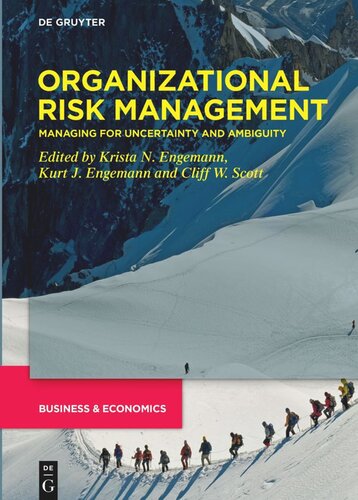

Most ebook files are in PDF format, so you can easily read them using various software such as Foxit Reader or directly on the Google Chrome browser.
Some ebook files are released by publishers in other formats such as .awz, .mobi, .epub, .fb2, etc. You may need to install specific software to read these formats on mobile/PC, such as Calibre.
Please read the tutorial at this link: https://ebookbell.com/faq
We offer FREE conversion to the popular formats you request; however, this may take some time. Therefore, right after payment, please email us, and we will try to provide the service as quickly as possible.
For some exceptional file formats or broken links (if any), please refrain from opening any disputes. Instead, email us first, and we will try to assist within a maximum of 6 hours.
EbookBell Team

4.0
76 reviewsEvery organization faces difficult decisions when managing risk and the potential consequences of its manifestation. For a more thorough outlook on risk, organizations should also evaluate and engage with its advantages. Organizational Risk Management: Managing for Uncertainty and Ambiguity covers a series of perspectives that represent both causal and interpretative frameworks. These perspectives shed light on how organizational structures and processes adapt amid a complex, dynamic organizational environment in an effort to manage and exploit the accompanying risks of that environment.
This volume will oftentimes challenge the expectation for and utility of clarity in crisis situations, thereby favoring uncertainty and ambiguity as the necessary conditions to exploit organizational risk and explore opportunities that rely on interpretation, learning, and knowledge among individuals.
The ultimate objective of Organizational Risk Management: Managing for Uncertainty and Ambiguity is to promote discussion among practitioners and organizational scholars who venture to understand organizational risk. Setting such a goal is to essentially practice what this volume shall inevitably preach: engage one another in order to proactively monitor and respond to risk. Strengthening ties along the bridge between practice and science will be a welcomed consequence of this volume.